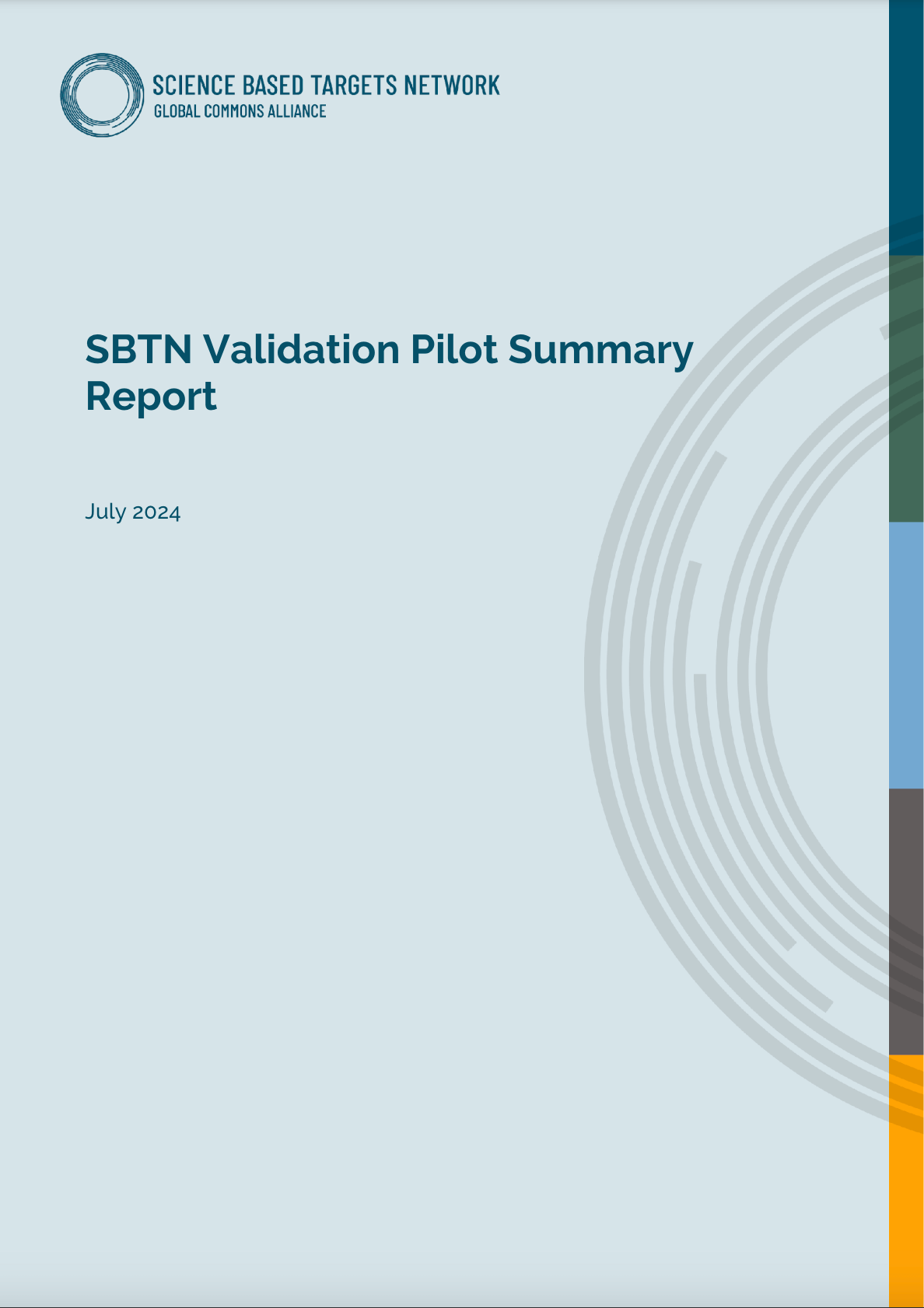SBTN Validation Pilot Summary Report
Detalles
The Science Target Network (SBTN) published the first corporate science-based targeting methods for nature in May 2023. The first SBTN publication invites companies to assess and prioritize their environmental impact and set targets for freshwater and land. This allows companies to reduce their negative impacts and increase the positive ones for nature, including people.
• Step 3: Measure, Set, Disclose – Target-setting methods for land and freshwater pressures, which are key drivers of biodiversity loss and climate change. OBJECTIVES The objectives of the pilot were: |
Recursos relacionados
The Benefits of Ecosystem Restoration
This report assesses the benefits derived from five restoration projects in Europe and reveals how degraded ecosystems are being restored…
Responsible supply chains: A key tool for halting deforestation
Responsible and sustainable supply chains play a crucial role in combating deforestation and forest degradation, protecting biodiversity and mitigating climate…
Nota de la IEEB sobre el Plan Estratégico del Patrimonio Natural y la Biodiversidad y importancia para el sector privado
Nota elaborada por el secretariado de la IEEB en enero 2023 sobre el Plan Estratégico del Patrimonio Natural y de…


